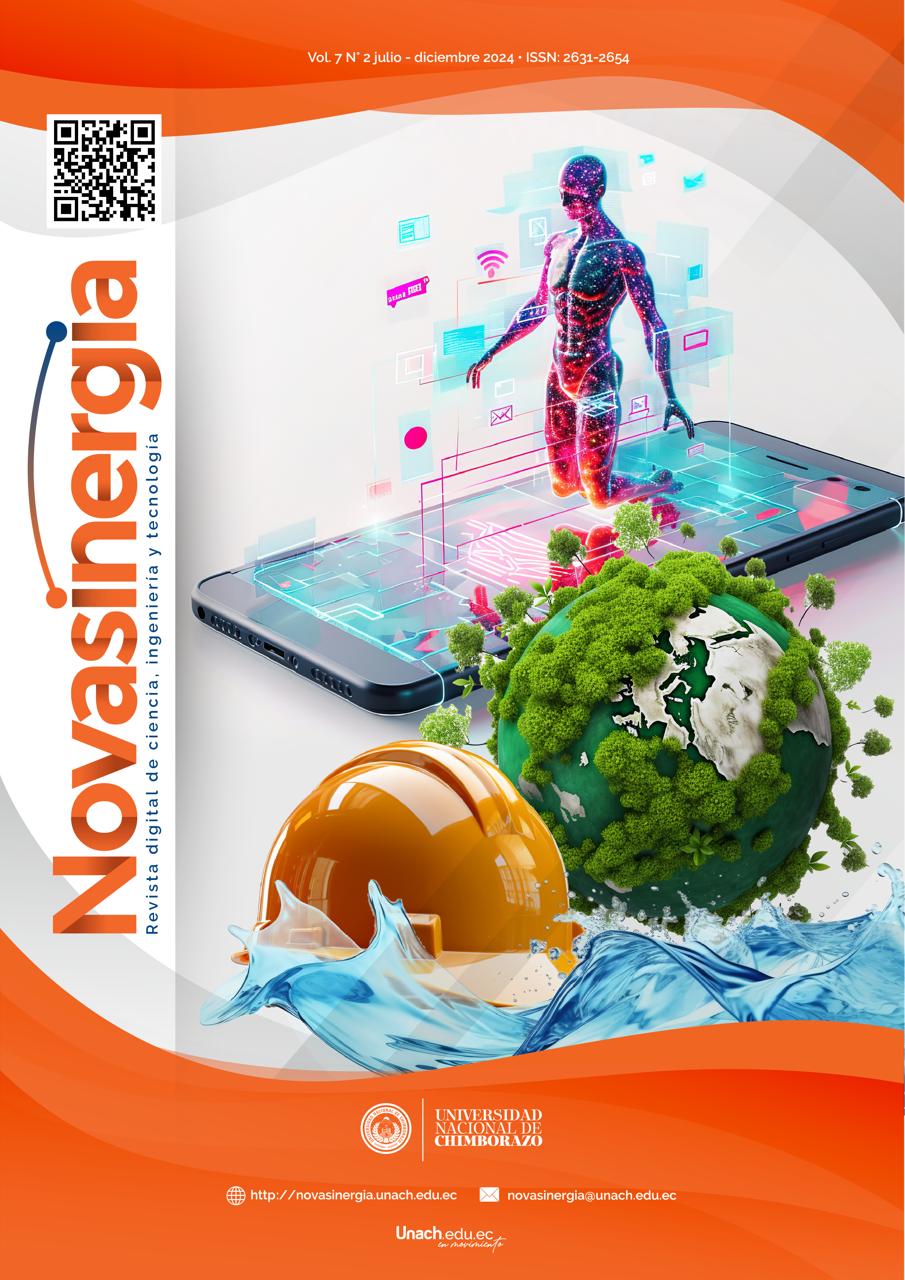Evaluation of the quality of drinking water in the municipality of Vinto-Cochabamba-Bolivia
DOI:
https://doi.org/10.37135/ns.01.14.01Keywords:
Water, Quality, Coliforms, Pollution, Heat ResistantAbstract
The presence of coliform bacteria in water presents a potential threat to public health, as it can increase the risk of infectious diseases in the most vulnerable population. The matter is more complicated when the physicochemical and microbiological quality of the water consumed is unknown. The purpose of this study is to evaluate the current state of the quality of drinking water in three Territorial Base Organizations (OTB’s) of the Municipality of Vinto-Cochabamba and the relationship of dependence of the microbiological parameters with the OTB’s. Laboratory analyzes of 30 samples taken from different homes (10 samples per OTB) show compliance with the maximum permissible limits of physicochemical parameters (pH, conductivity, alkalinity and hardness) according to Bolivian Standard 512 (NB 512). Regarding the microbiological parameters for total coliforms, of the 30 samples analyzed, only 11 met the maximum permissible limit, unlike the total coliform parameter, where 25 of the 30 samples met the maximum permissible limit. The microbiological parameters were subjected to chi-square analysis, providing sufficient evidence to affirm with 95% confidence that the results of total and heat-resistant coliforms do not depend on the OTB (p=0.36). By contrasting the results of household water consumption with that of water supplied, it can be speculated that contamination of microbiological origin occurs either in the distribution pipes, household tanks and/or the water use practices of each household.
Downloads
References
Barreto Bogado, A. (2022). Determinación de la variabilidad de la calidad del agua para consumo humano. caso: Bo San Vicente de La Ciudad de Pilar. Ciencia Latina Revista Científica Multidisciplinar, 6(3), 3239–3250. doi: 10.37811/cl_rcm.v6i3.2458.
Choque Aguilar, M. R., & Quispe Quisbert, L. A. (2023). Evaluación del riesgo de contaminación y la calidad de agua de consumo humano en pozos autoadministrados en el Distrito Central Del Municipio de Vinto, Cochabamba – Bolivia. Ciencia Latina Revista Científica Multidisciplinar, 7(4), 4966–4981. doi: 10.37811/cl_rcm.v7i4.7325.
Cobacho, R., Arregui F., Cabrera E., & Cabrera, E. (2008). Private Water Storage Tanks: Evaluating Their Inefficiencies. Water Practice and Technology, 3(1), 1–8. doi: 10.2166/wpt.2008.025.
Cossio Andia, E. & Choque Soto, N. (2019). Estudio Prospectivo de La Calidad Microbiológica Del Agua Que Consume La Población de Fortaleza - Cochabamba. Cimel, 24(1), 44-88. Recuperado de: https://docplayer.es/183729966-Consume-la-poblacion-de-fortaleza-cochabamba.html
Gioda, A. (1999). Breve Historia Del Agua. La naturaleza y sus recursos, 35(1), 42-48. Recuperado de: https://dialnet.unirioja.es/servlet/articulo?codigo=4624909
Gobierno Autónomo Municipal de Vinto. (n.d.). Servicios Básicos. Recuperado de: (https://www.gamvinto.gob.bo/municipio/servicios-basicos/).
Gómez Sellés, E., Cabrera Marcet, E., Soriano Olivares, J., & Balaguer Garrigos, M. (2015). Gestión Sostenible Del Agua y Usos de Aljibes Domésticos , Un Binomio Incompatible. IV Jornadas de Ingeniería del Agua. La precipitación y los procesos erosivos. 859–868. Córdoba, España. Recuperado de: https://m.riunet.upv.es/bitstream/handle/10251/142692/Gomez%3BCabrera%3BSoriano%20-%20Gesti%C3%B3n%20sostenible%20del%20agua%20y%20uso%20de%20aljibes%20dom%C3%A9sticos%2C%20un%20binomio%20incom....pdf?sequence=1&isAllowed=y
Gwimbi, P. (2011). The Microbial Quality of Drinking Water in Manonyane Community: Maseru District (Lesotho). African Health Sciences 11(3), 474–480. Recuperado de: https://www.ajol.info/index.php/ahs/article/view/73418
Hanna Instruments. (n.d. -a). ManuaI de Instrucciones HI 3811 Test Kit de Alcalinidad. Recuperado de: https://cdn.hannacolombia.com/hannacdn/support/manual/2012/10/20140707112234-manual-hi-3811.pdf.
Hanna Instruments. (n.d. -b). Manual de Instrucciones HI 3812 Equipo de Análisis de Dureza. Recuperado de: https://cdn.hannacolombia.com/hannacdn/support/manual/2019/09/Manual_HI3812.pdf.
Ibnorca. (2009). NB 31006:2009 (Agua Potable - Identificación y Recuento de Bacterias Coliformes Totales, Coliformes Termorresistentes y Escherichia Coli - Método de Número Más Probable). Bolivia.
Ibnorca. (2014). NB 31001:2014 (Agua Potable - Determinación de PH (Potencial de Hidrógeno) - Método Electrométrico (Segunda Revisión)). Bolivia.
Ibnorca. (2016a). NB 31011:2016 (Agua Potable - Determinación de La Conductividad). Bolivia.
Ibnorca. (2016b). NB 496:2016 Agua Potable-Toma de Muestras (Segunda Revisión). Bolivia.
Ibnorca. (2016c). NB 512:2016 (Agua Potable -REQUISITOS). Bolivia.
Pérez-López, E. (2016). Control de calidad en aguas para consumo humano en la región occidental de Costa Rica. Revista Tecnología En Marcha, 29(3), 3-14. doi: 10.18845/tm.v29i3.2884.
Pérez, J. I., Nardini A. G., & Galindo, A. A. (2018). Análisis Comparativo de Índices de Calidad Del Agua Aplicados Al Río Ranchería, La Guajira-Colombia. Informacion Tecnologica, 29(3), 47–58. doi: 10.4067/S0718-07642018000300047.
Ramos Parra, Y., & Pinilla Roncancio, M. (2020). Calidad de Agua de Consumo Humano En Sistemas de Abastecimiento Rurales En Boyacá, Colombia. Un Análisis Infraestructural. Revista EIA, 17(34), 219-233. doi: 10.24050/reia.v17i34.1378.
Reyes, Y. C., Vergara, I., Torres, O., Díaz Lagos, M., y González. E. E. (2016). Contaminación Por Metales Pesados: Implicaciones En Salud, Ambiente y Seguridad Alimentaria. Ingeniería, Investigación y Desarrollo: I2+D, 16(2), 66–77. Recuperado de: https://dialnet.unirioja.es/servlet/articulo?codigo=6096110
Rodríguez, S. C., Asmundis, C. L., Ayala, M. T. y Arzú, O. R. (2018). Presencia de Indicadores Microbiológicos En Agua Para Consumo Humano En San Cosme (Corrientes, Argentina). Revista Veterinaria, 29(1), 9–12. doi: 10.30972/vet.2912779.
Vildozo, L. H., Peredo Ramírez, Y., & Vargas Elío, F. (2020). Diagnóstico Preliminar de La Calidad Bacteriológica Del Agua de Consumo Humano y Evaluación de Prioridad de Medidas Correctivas En El Municipio de Poopó (Oruro, Bolivia).” Acta Nova, 9(4), 483–503. Recuperado de: http://www.scielo.org.bo/scielo.php?script=sci_arttext&pid=S1683-07892020000100002







